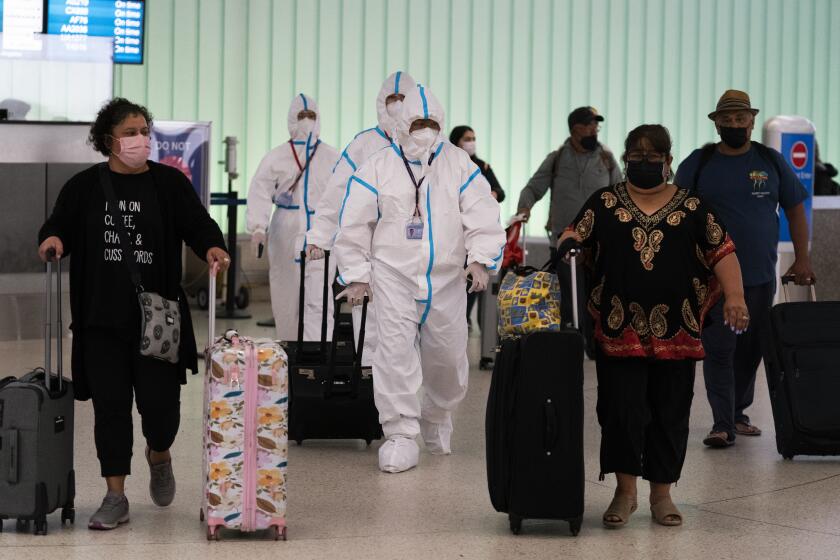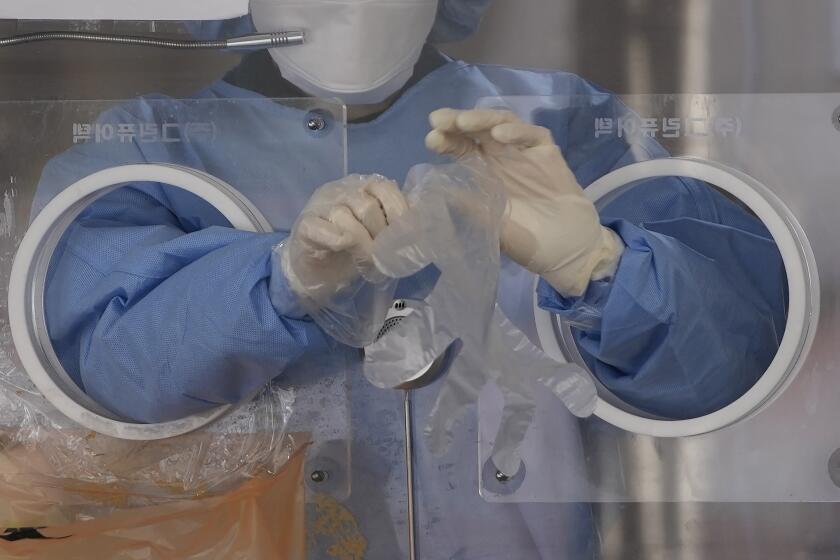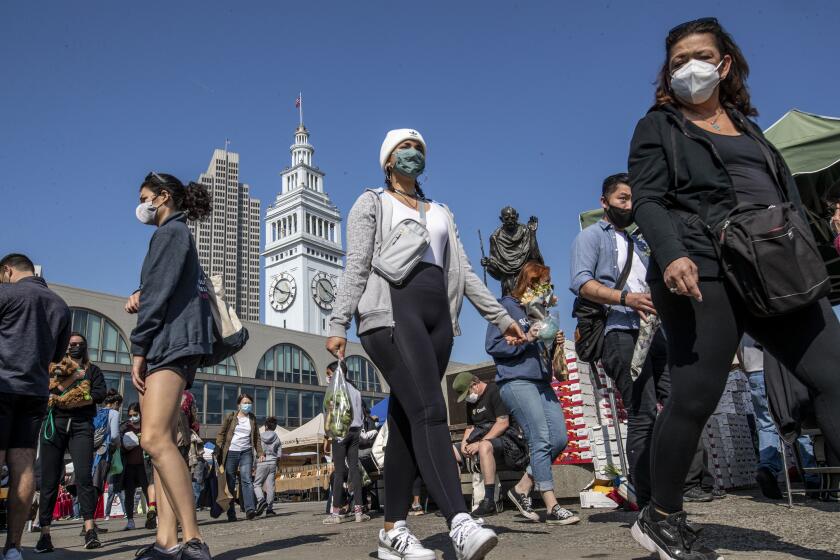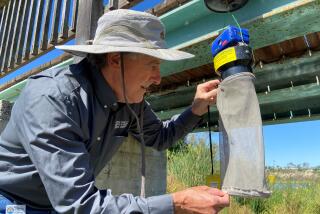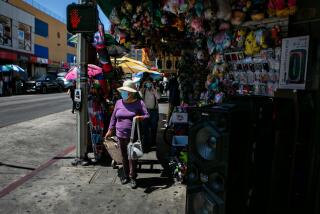What we know about L.A. County’s first case of the Omicron variant

- Share via
California has recorded its second confirmed case of the Omicron variant of the coronavirus, this one in Los Angeles County.
There are currently no indications of a larger outbreak, and officials are urging people not to panic, saying they see no need for more restrictions at this time.
Here is what we know:
The patient
The infection, county officials said, was most probably travel-related, as the person had returned to L.A. after flying to South Africa via London on Nov. 22 — just days before Omicron’s detection was publicly announced and the World Health Organization officially declared it a “variant of concern.”
“A small number of close contacts in Los Angeles have been identified and, to date, all have tested negative and have no symptoms,” county officials said in a statement.
Confirmation of the variant in the nation’s most populous county came as officials urged residents to get tested for the coronavirus more frequently when it makes sense to do so — particularly during the holiday season.
Condition
The infected adult, identified only as a fully vaccinated L.A. County resident, is “self-isolating, and their symptoms are improving without medical care,” the county said.
Analysis
The L.A. case came a day after San Francisco announced the first confirmed U.S. Omicron infection, the first identified in the U.S. Since the initial discovery, additional cases have been found in Colorado, New York, Hawaii and Minnesota.
“Throughout the pandemic, we have always known there would be more mutations, resulting in the possibility of a more dangerous variant than the Delta variant,” L.A. County Public Health Director Barbara Ferrer said in a statement. “While we can’t know for certain the impact of Omicron at this time, the good news is that we already know how to reduce transmission and slow spread using both pharmaceutical and non-pharmaceutical interventions.”
Omicron’s impact on the COVID-19 pandemic will depend on a variety of factors that will take days to weeks for scientists to untangle.
The infected San Francisco resident also returned home from South Africa on Nov. 22, according to local health officials and the Centers for Disease Control and Prevention. The person developed symptoms around Nov. 25 — Thanksgiving — and got tested Sunday.
Citing privacy, health officials released few details about the individual, other than the person is 18 to 49 years old.
The person was fully vaccinated and had mild symptoms that did not require hospitalization. Officials said the individual’s condition was improving as of Wednesday.
A UC San Francisco lab that analyzes coronavirus test results is a big reason behind the quick identification of the Omicron variant in California.
What’s next
Officials are urging residents to get tested for the coronavirus more frequently when it makes sense to do so — particularly if they plan to travel or gather with family or friends during the holiday season.
Increased testing has long been a centerpiece of both the local and federal response to the COVID-19 pandemic. Such screenings have grown even more important following the discovery of the new highly mutated strain.
L.A. County will instruct skilled nursing facilities to introduce more routine testing of residents and staff, “and to offer rapid testing for visitors that are entering any indoor spaces at these facilities,” Ferrer said Thursday.
More to Read
Sign up for Essential California
The most important California stories and recommendations in your inbox every morning.
You may occasionally receive promotional content from the Los Angeles Times.
